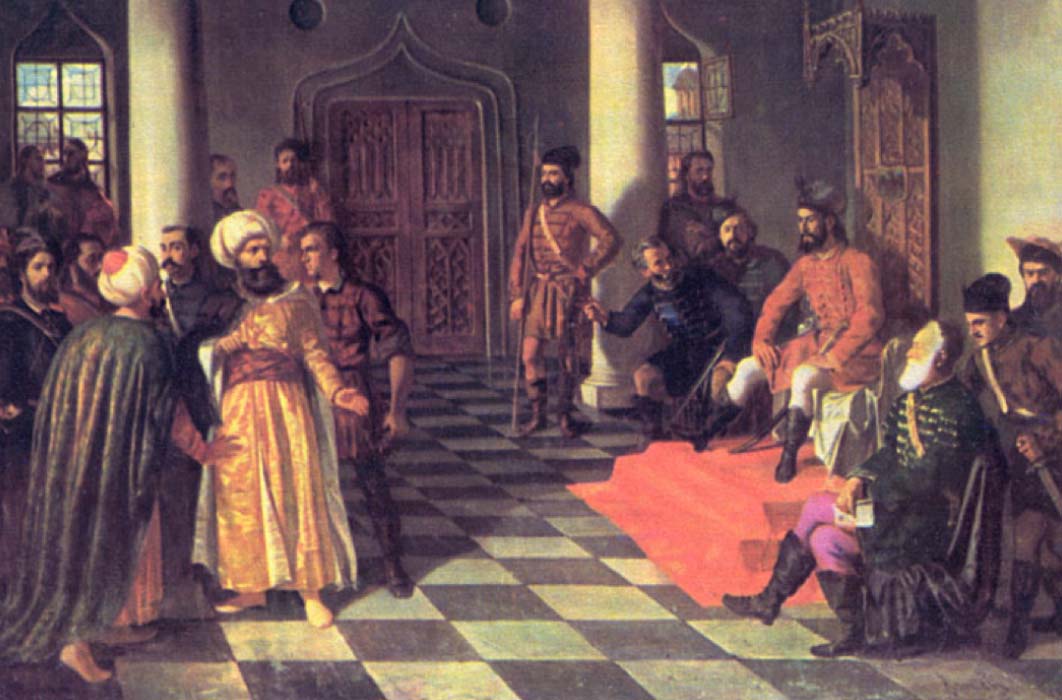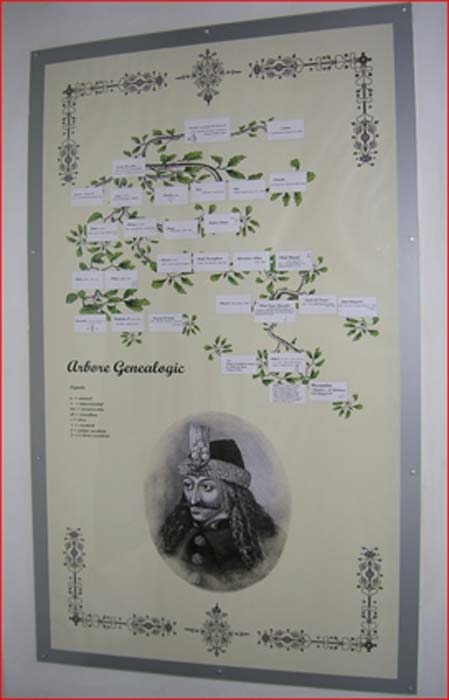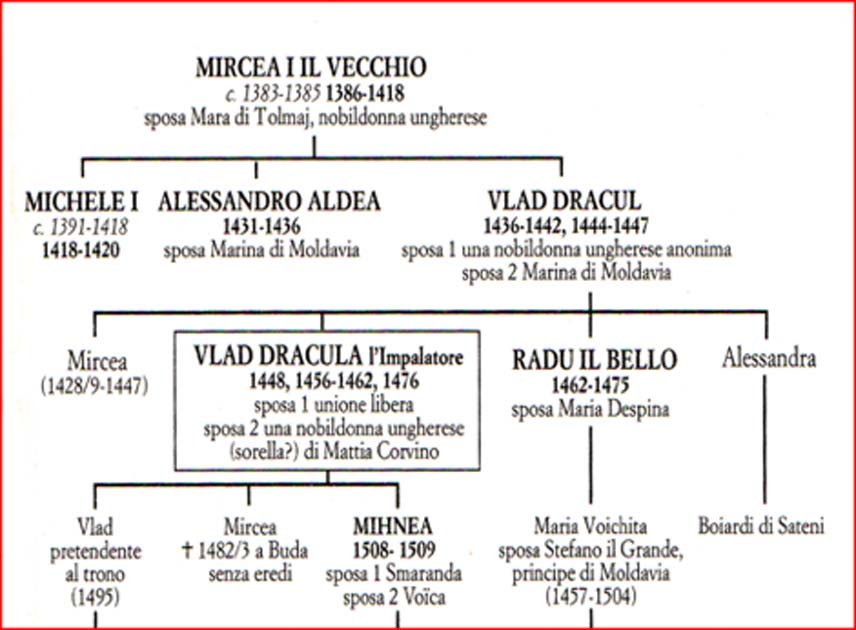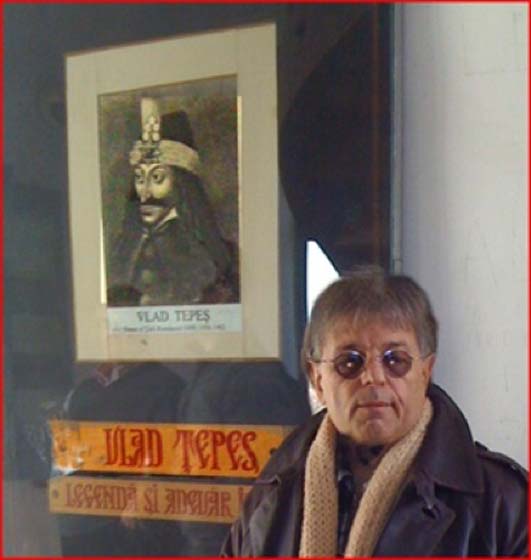
Maria Balsa, Daughter of the Dragon: The Long-Lost Illegitimate Child of Vlad the Impaler?
Has a 16th-century Italian noble woman, Maria Balsa, wife of Giacomo Alfonso Ferrillo, Count of Muro Lucano and Lord of Acerenza, (Italy) been identified as the illegitimate daughter Vlad III Tepe, also known historically as Vlad the Impaler, Prince of Wallachia and popularly known as Count Dracula? Analyses of paintings of Vlad over Europe hint at his membership of the Order of the Dragons, but the family crest of Maria in the town of Acerenza may hold hidden clues to her ancestry, or was the seven-year-old war orphan an imposter?

Depiction of the genealogy of Vlad III Tepe, the Impaler, in Bran Castle (Image: Courtesy Dr Roberto Volterri)
Genealogy of Vlad III Tepe the Impaler
Vlad III Tepe had thee recognized sons, the first was probably illegitimate and the last two born within wedlock. The first son, Mihnea I cel Rǎu (1462 - 1510), was born to an unknown Transylvanian noblewoman. Mihnea, not by chance nicknamed ‘the evil man’ (cel Rău) because he followed his father's footsteps to the letter, managed to conquer the throne of Wallachia in 1508. Although he remained on the throne only for a year, he left no doubt about the reign of terror he continued so as not to disappoint his father's example. On many occasions when someone betrayed him or just opposed him, he had their noses and lips cut off. Two years after ascending the throne, after a thousand vicissitudes and a nomadic life to escape his enemies, he was assassinated at the Catholic cathedral of Sibiu, in Transylvania, by a Serbian hit man named Dimitrije Iaxici and is buried in the same town, where his second wife, Voica, and his children Milos and Ruxandra remained.

The family tree of Vlad III Tepe, the Impaler (Image: Courtesy Dr Roberto Volterri).
The second son of Vlad, this time a legitimate son, was Mircea, whose traces were lost in 1483 in the city of Buda after having served the Catholic bishop of Oradea, John Filipecz. The third representative of the Vlad-dynasty was another Vlad, who contended for the Wallachian throne in Radu cel Mare. But ‘Vlad the Impaler’ had more children out of wedlock, such as Vlad IV Gospodaro of Wallachia, nicknamed the Monk (in Romanian Călugărul), munificent towards the Church, hence the well-deserved nickname.

Dr Roberto Volterri at the famous portrait of Vlad III Tepe at Bran Castle. Vlad III never resided at Bran Castle – used today to showcase his life (Image: Courtesy of Dr Roberto Volterri)
The Appearance of Vlad Tepe
Niccolo da Modrussa, papal legate of the court of Mattia Corvino described the appearance of Vlad III Tepe, Voivoda (Prince) of Wallachia (Romania, Transylvania) as follows: "... a little short but very strong and robust, cold and terrible in appearance, with a large aquiline nose, wide nostrils, a thin and reddish face, with large green eyes wide open and framed by black eyelashes, very thick and long, which gave the eyes a terrifying appearance. His face and chin were shaved, but he wore a mustache. The wide temples increased the width of the forehead. A bull neck joined the head from which the black locks of the hair descended on the wide shoulders of his person".




